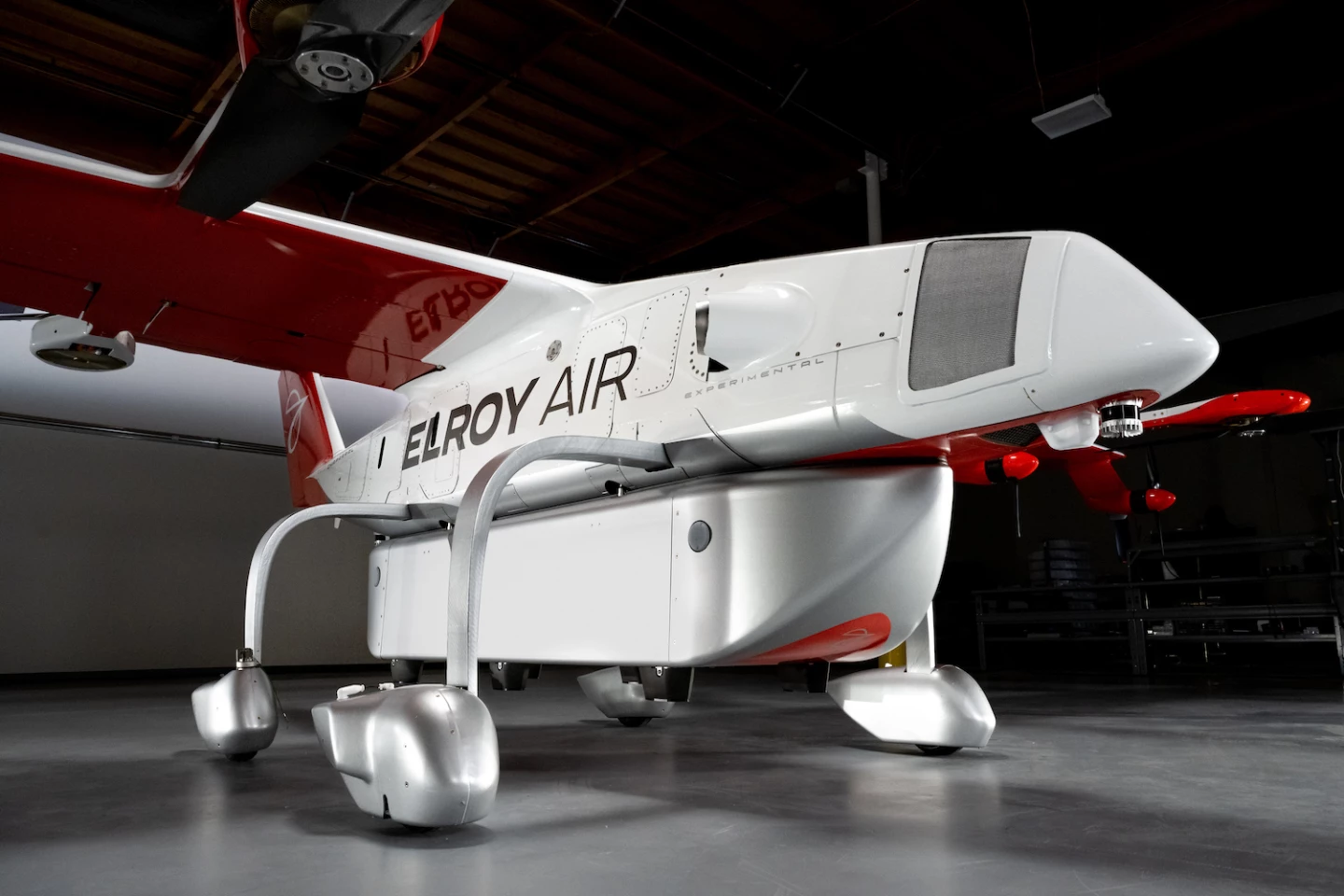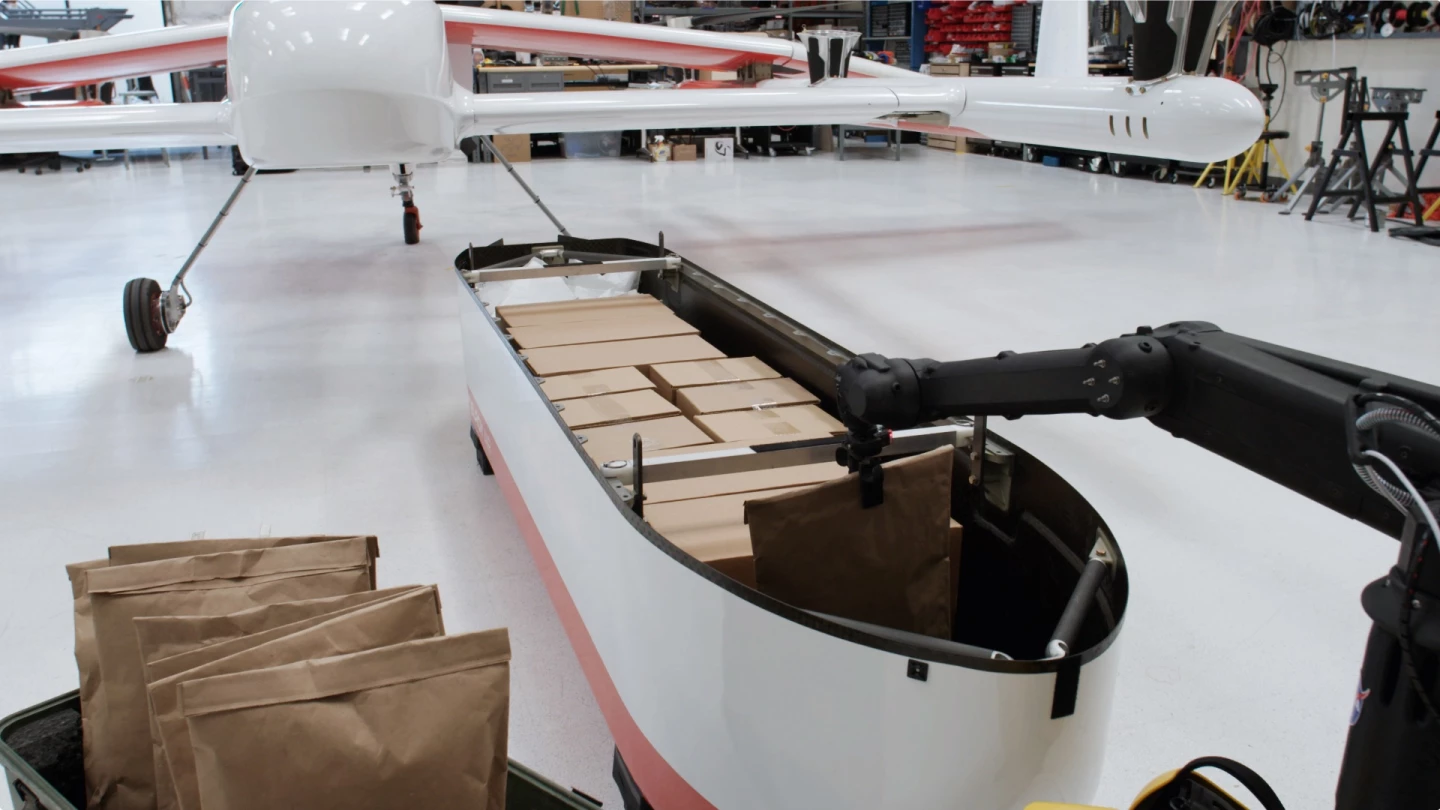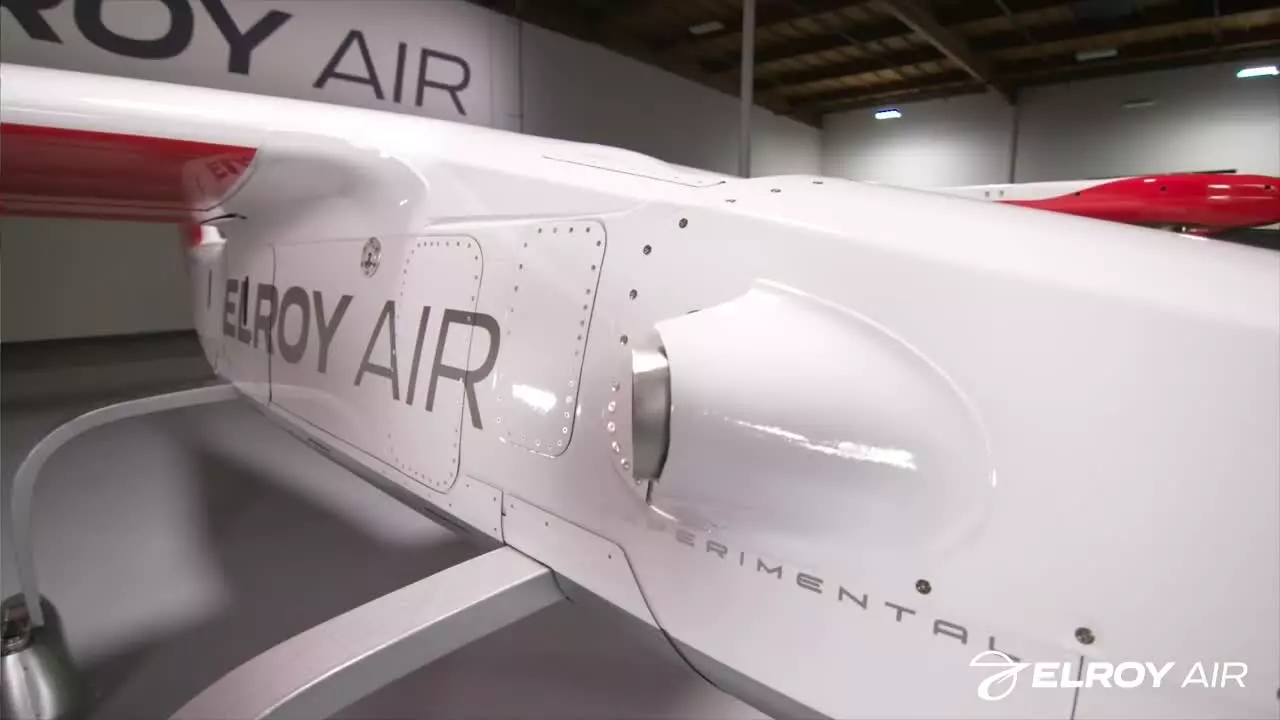San Francisco's Elroy Air has revealed its pre-production Chaparral C1, an autonomous VTOL lift & cruise cargo drone running on a hybrid-electric system that allows it to transport loads up to 500 lb (227 kg), in a canoe-shaped cargo tub, over distances up to 300 miles (482 km).
The Chaparral is primarily targeted at express logistics and delivery operations. Elroy's stated mission is "to enable same-day shipping to every person on the planet," and while that goal seems about a hundred years away, there's no doubt that short to mid-distance logistics is in for a shake-up when the FAA starts issuing approvals for the avalanche of VTOL projects in the works.
Elroy doesn't quote a top speed or cruise speed for this machine, but claims it can "deliver directly to loading docks at a speed 5X faster than trucks." Flying autonomously, it removes human error – not to mention expense – from the equation as well, and while it looks to be the size of a small plane, its eight-propeller electric VTOL lift system means it can take off and land more or less in a space the size of its own footprint.

While both the VTOL props and the four cruise props along the wing are fully electric and battery-powered, the Chaparral runs an additional gas turbine generator to keep the batteries topped up in an efficient manner. Thus, it won't be zero-emissions, but the tradeoffs include a longer range, and instant refueling – as opposed to having to sit on a charger or engage in a battery swap operation when it touches down.
The company says it's "secured agreements for more than 500 aircraft from commercial, defense and humanitarian customers, amounting to more than US$1 billion," putting a US$2 million-plus price tag on each unit. That's a hefty whack for a big cargo drone. One hundred and fifty of these aircraft will go to Mesa Airlines, which will use them for express parcels and medical deliveries. A further 100 are headed for AYR Logistics, which will use it to hugely expand the reach and expediency of its humanitarian aid programs in remote areas.
Elroy pitches the Chaparral as a "conveyor belt through the sky," capable of picking up and dropping off its cargo tubs automatically. But while we've no doubt that the technology will be capable, questions remain. When do these companies expect to go into operation with this gear? When do they believe aviation authorities will start authorizing fully autonomous flights of aircraft this large? Will they be able to fly these huge drones over urban areas, or will they be restricted to flying over waterways?

Elroy doesn't give an estimated date for entry into service. But its customers are clearly ready to move to an autonomous model, and the company has the backing of the US Air Force, having just been awarded a further US$1.7 million in contracts as part of the AFWERX Agility Prime program. This is in addition to the US$48 million the company had raised by August last year.
Check out a video at Vimeo: Elroy Air Chaparral C1 Unveil: Full Version
Source: Elroy Air








